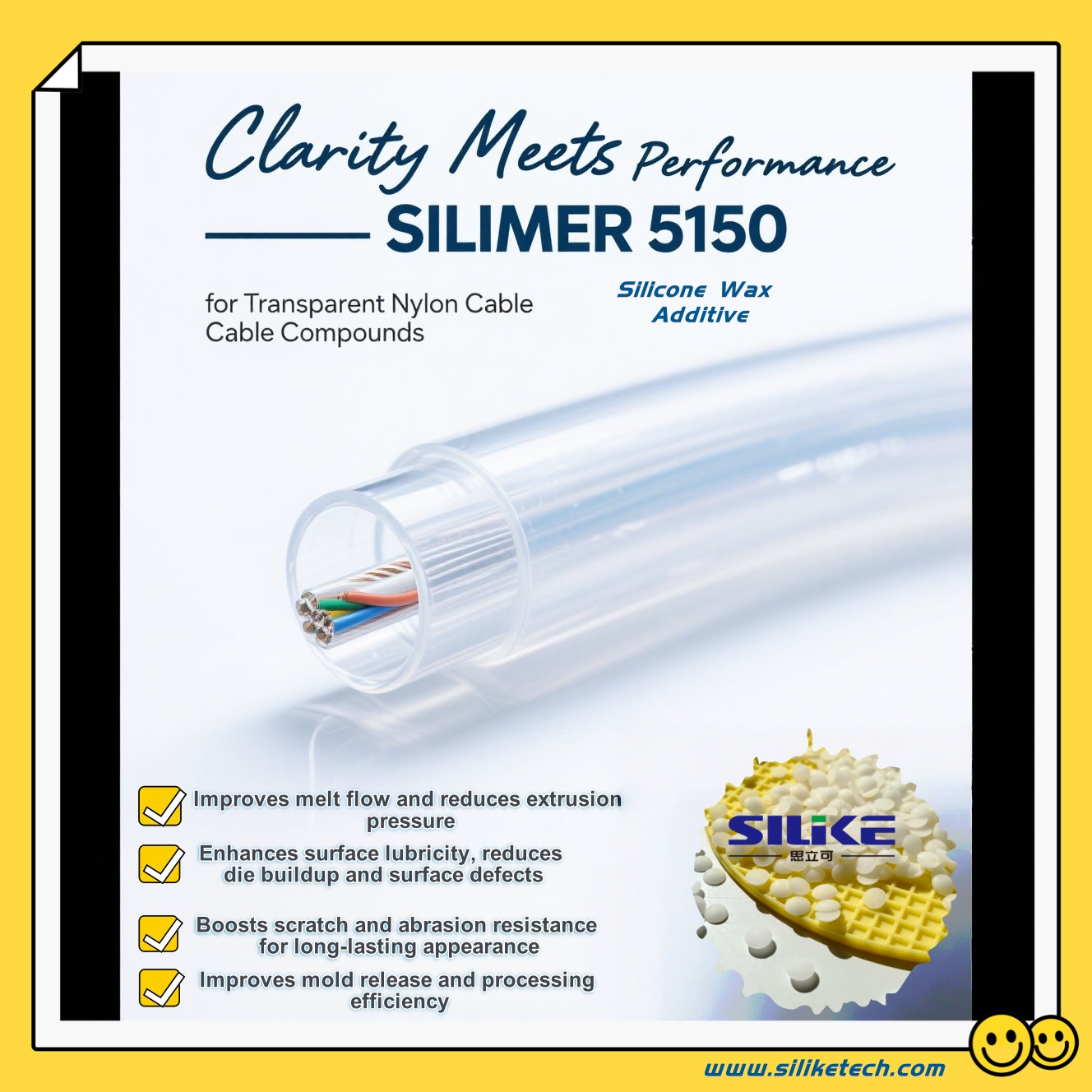Transparent nylon has emerged as a high-performance engineering plastic that uniquely combines optical clarity, mechanical strength, and chemical resistance. These properties are achieved through deliberate molecular design—such as reducing crystallinity via amorphous structures or introducing cyclic monomers—which gives the material a glass-like appearance.
Thanks to this balance of strength and transparency, transparent nylons (such as PA6 and PA12) are now widely used in optics, electronics, automotive, and medical industries. Increasingly, they are also being adopted in wire and cable applications, including outer jackets, insulation layers, and protective coatings. Their durability, temperature resistance, and visual inspectability make them ideal for demanding environments, such as in BVN, BVNVB, THHN, and THHWN cable types.
Challenges in Processing Transparent Nylon Thermoplastics
Despite these advantages, transparent nylon presents certain processing challenges, particularly in extrusion or injection molding. Its semi-crystalline structure can lead to:
Poor melt flow and limited fluidity
High extrusion pressure
Surface roughness or defects
Difficulties in maintaining high transparency under thermal/mechanical stress
To address these issues without sacrificing clarity or insulation performance, manufacturers must turn to specialized lubricants during compounding.
Lubricant Additive Solutions for Transparent Nylon Wire & Cable Thermoplastic Compounds
Lubricants play a critical role in improving the processability, surface smoothness, and flow behavior of transparent nylon compounds. The ideal lubricant must also preserve optical clarity and meet electrical and regulatory requirements.
Here are the most effective types of lubricants used in transparent nylon wire & cable applications:
Description: Silicone-based additives, such as silicone oils or siloxane-based masterbatches, are effective in improving flow properties and reducing the coefficient of friction in nylon compounds. They provide excellent lubricity without significantly affecting transparency.Benefits: Enhances mold release, reduces surface friction, and improves extrusion smoothness. Silicone lubricants are particularly useful for maintaining clarity in transparent nylon formulations.Examples: Polydimethylsiloxane (PDMS) or silicone masterbatches like Dow Corning MB50-002, SILIKE silicone masterbatch LYSI-307, and silicone additive LYSI-407.Considerations: Ensure compatibility with nylon to avoid phase separation, which could impact transparency. Dosage typically ranges from 0.5% to 2% by weight, depending on the formulation.
Introducing Novel Silicone Wax Lubricant Processing Additive

SILIKE Copolysiloxane Additives and Modifiers — High-Lubrication Processing Additive SILIMER 5150
SILIMER 5150 is a functionally modified silicone wax featuring a unique molecular structure that provides excellent compatibility with a wide range of matrix resins. It offers outstanding lubrication without causing precipitation, blooming, or compromising transparency, surface appearance, or finish of the final product.
SILIMER 5150 silicone wax is widely used to enhance the scratch resistance, surface gloss, and texture retention of plastic and composite materials such as PA, PE, PP, PVC, PET, ABS, thermoplastic elastomers, plastic alloys, and wood-plastic composites. It also significantly improves lubricity and mold release during processing, helping manufacturers achieve better productivity and long-lasting product aesthetics.
Feedback on SILIKE’s silicone wax additive, SILIMER 5150, from thermoplastic manufacturers and processors has been positive. the easy-to-use pellets significantly enhance the processing of transparent nylon(PA6, PA66, PA12, and copolyamides) wire and cable compounds—resulting in improved melt flow, better mold filling, enhanced abrasion and mar resistance, and a smoother surface finish in the final components.
2. Fatty Acid Amides Description: Internal lubricants like erucamide, oleamide, and stearamide act as slip agents.Benefits: Improve melt flow, reduce die build-up, and enhance surface gloss.
3. Metallic Stearates Description: Common processing aids like calcium stearate and zinc stearate are used to reduce melt viscosity.Benefits: Enhance extrusion flow and release without significantly affecting clarity.
4. Wax-Based Lubricants Description: Synthetic waxes, such as polyethylene wax or montan wax, can be used as external lubricants to improve flow and surface smoothness in nylon compounds.Benefits: Reduces friction during extrusion and improves processing efficiency. Certain waxes, like low-molecular-weight polyethylene waxes, can maintain clarity in transparent nylon.
5. PTFE (Polytetrafluoroethylene) Additives Description: PTFE-based lubricants, often in micronized powder or masterbatch form, provide exceptional slip.Benefits: Reduce friction and wear, ideal for cables requiring abrasion resistance.
6. Ester-Based Lubricants Description: Esters such as glycerol monostearate (GMS) or pentaerythritol tetrastearate (PETS) act as internal lubricants.Benefits: Improve fluidity, maintain clarity, and withstand high processing temperatures.
How to Choose the Right Lubricant for Transparent Nylon thermoplastics compounds?
When processing transparent nylon thermoplastics compounds for wire and cable applications, lubricant selection is critical to achieving both functional performance and aesthetic quality. The right additive can:enhance melt flow, reduce surface friction and roughness, improve extrusion stability, maintain clarity and electrical performance, support regulatory compliance (e.g., RoHS, UL).
For best results, conduct small-scale trials and consult with SILIKE—your trusted supplier of silicone-based additives, silicone waxes, lubricants, PPA, polymer processing additives, and thermoplastics additives —to select the optimal lubricant type and dosage based on your specific nylon grade, cable design, and processing method.
Looking for formulation advice or lubricant sample support to improve melt flow and improve smoothness in transparent nylon cable compounds?
Whether used in injection molding or extrusion, SILIMER 5150 helps reduce processing defects, minimizes die buildup, and enhances scratch and abrasion resistance, making it an ideal choice for nylon-based applications requiring durability, smooth surface finish, and high transparency.
Contact the SILIKE technical team for suitable recommendations on silicone-based additives in PA processing and surface properties(lubricity, slip, lower coefficient of friction, silky feeling) improvement, and a sample of silicone-based Lubricants, or, surface finish enhancer for nylon materials.
Tel: +86-28-83625089 or via Email: amy.wang@silike.cn. Website: www.siliketech.com
Media Contact
Company Name: Chengdu Silike Technology Co., Ltd.
Email: Send Email
Country: China
Website: https://www.siliketech.com/






